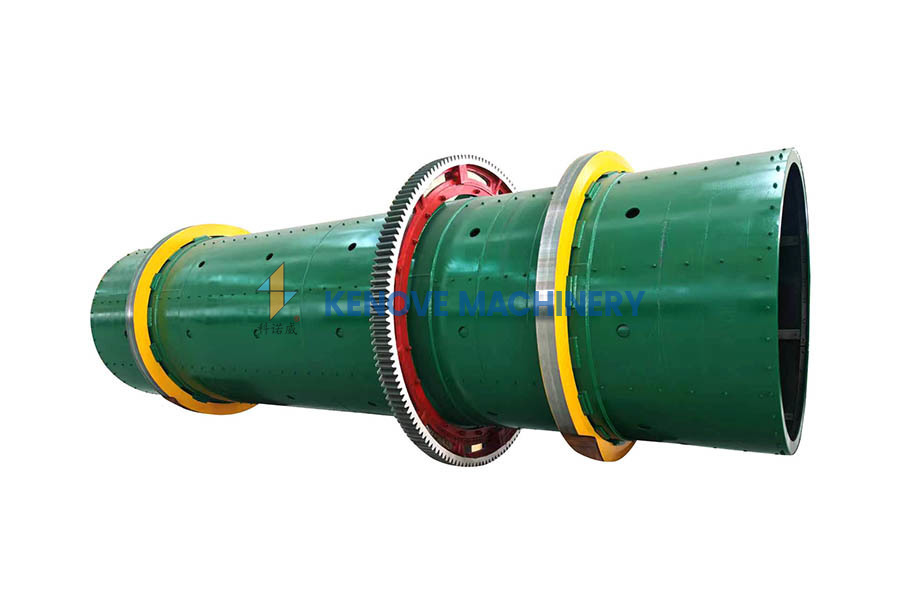From Seed to Harvest: The Essential Role of Rotary Drum Coaters in Modern Agriculture
Release time:
Aug 15,2025
From Seed to Harvest: The Essential Role of Rotary Drum Coaters in Modern Agriculture In the ever-evolving landscape of agriculture, technology plays a pivotal role in enhancing productivity and efficiency. One such innovation that has made significant strides is the use of rotary drum coaters. These machines have revolutionized the way seeds are treated and coated, ultimately impacting crop yield
From Seed to Harvest: The Essential Role of Rotary Drum Coaters in Modern Agriculture
In the ever-evolving landscape of agriculture, technology plays a pivotal role in enhancing productivity and efficiency. One such innovation that has made significant strides is the use of rotary drum coaters. These machines have revolutionized the way seeds are treated and coated, ultimately impacting crop yield and quality. In this article, we will explore the essential role of rotary drum coaters in modern agriculture, delving into their functionality, benefits, and the overall impact on farming practices.
Table of Contents
- Introduction
- Understanding Rotary Drum Coaters
- How Rotary Drum Coaters Work
- Benefits of Using Rotary Drum Coaters
- Applications in Agriculture
- Improving Seed Yield and Quality
- Environmental Impact and Sustainability
- Choosing the Right Rotary Drum Coater
- Frequently Asked Questions
- Conclusion
Introduction
The journey from seed to harvest is a complex process that requires precision, care, and the right tools. As the global population continues to rise, the demand for efficient agricultural practices becomes paramount. Rotary drum coaters serve as a crucial component in this process, helping farmers enhance their seed treatments and improve crop outcomes. By understanding how these machines work and the benefits they offer, farmers can make informed decisions about their agricultural practices.
Understanding Rotary Drum Coaters
Rotary drum coaters are specialized machines designed for the coating and treatment of seeds. They consist of a rotating drum that allows for the even distribution of coatings, ensuring that every seed receives the necessary treatment. These machines can apply various materials, including fertilizers, pesticides, and fungicides, which are essential for protecting seeds and promoting healthy growth.
Types of Rotary Drum Coaters
There are several types of rotary drum coaters available on the market, each designed to cater to specific agricultural needs:
- Batch Coaters: Ideal for small to medium-sized operations, batch coaters process seeds in discrete quantities, allowing for tailored treatments.
- Continuous Coaters: Suitable for large-scale operations, these machines continuously feed seeds into the coating process, ensuring a steady output.
- High-Shear Coaters: These machines utilize high-speed mixing to ensure thorough coating, often used for seeds that require a specific treatment.
How Rotary Drum Coaters Work
The operation of a rotary drum coater is relatively straightforward. Seeds are introduced into the rotating drum, where they are mixed with the coating materials. The rotation ensures that the seeds are evenly coated, while the design of the drum allows for optimal treatment. The entire process can be broken down into several key steps:
1. Seed Preparation
Before coating, seeds must be cleaned and sorted to ensure uniformity. This step is crucial, as consistent seed size and quality lead to better coating results.
2. Coating Application
As the seeds enter the rotating drum, the coating materials are added. Depending on the specific treatment being applied, this can include fertilizers, pesticides, or protective films. The rotation of the drum facilitates even distribution, preventing clumping and ensuring every seed is adequately treated.
3. Drying and Cooling
Once coated, the seeds may undergo a drying process to remove any excess moisture. Proper drying is essential to ensure that the coating adheres effectively and does not interfere with seed germination.
Benefits of Using Rotary Drum Coaters
The implementation of rotary drum coaters in agricultural practices offers numerous advantages:
1. Enhanced Seed Protection
Coating seeds with protective materials helps shield them from pests, diseases, and environmental stressors. This protective layer is instrumental in ensuring higher germination rates and healthier plants.
2. Improved Nutrient Delivery
Through the application of fertilizers during the coating process, seeds receive a direct supply of nutrients, promoting vigorous growth and enhancing overall crop yield.
3. Optimized Planting Efficiency
Coated seeds are often easier to handle and plant, which can streamline the planting process. This efficiency translates to time and labor savings for farmers.
4. Increased Crop Uniformity
Uniform seed coating leads to consistent germination and growth rates, resulting in a more uniform crop. This consistency is vital for marketability and overall crop quality.
5. Reduced Chemical Runoff
By applying pesticides and fertilizers directly to the seeds, farmers can minimize the amount of chemicals that enter the soil and water supply, contributing to more sustainable agricultural practices.
Applications in Agriculture
Rotary drum coaters find applications across various agricultural sectors, enhancing both traditional and modern farming methods.
1. Field Crops
In field crops such as corn, wheat, and soybeans, rotary drum coaters help in applying fungicides and insecticides to seeds, protecting them during critical growth phases.
2. Vegetable and Fruit Farming
For vegetable and fruit crops, rotary drum coaters can apply specific nutrient mixes that enhance flavor and quality. These treatments can also reduce the risk of diseases, ensuring a healthier harvest.
3. Organic Farming
In organic agriculture, rotary drum coaters can apply organic-approved coatings that protect seeds without the use of synthetic chemicals, aligning with organic farming standards.
Improving Seed Yield and Quality
The ultimate goal of any agricultural practice is to maximize yield while maintaining quality. Rotary drum coaters play a vital role in achieving this objective by ensuring that seeds receive the appropriate treatments for optimal growth.
1. Enhanced Germination Rates
Coated seeds often exhibit higher germination rates due to the protective layers and nutrient delivery systems in place. This leads to stronger plants that are better equipped to thrive.
2. Resistance to Environmental Stressors
Seeds treated with protective coatings are more resilient to environmental stressors such as drought, pests, and diseases. This resilience is crucial in maintaining yield in challenging conditions.
3. Quality Assurance
The uniformity achieved through rotary drum coating results in higher-quality crops, which are essential for meeting market demands and achieving premium pricing.
Environmental Impact and Sustainability
The agricultural industry faces increasing scrutiny regarding its environmental impact. Rotary drum coaters contribute to sustainability in several ways:
1. Reduced Chemical Usage
By applying chemicals directly to the seeds, farmers can significantly reduce the overall amount of pesticides and fertilizers used. This targeted approach minimizes potential harm to the surrounding ecosystem.
2. Soil Health
Coated seeds promote healthier soil by reducing the risk of chemical runoff and leaching. Healthier soil leads to improved crop performance and long-term sustainability.
3. Support for Precision Agriculture
Rotary drum coaters align with precision agriculture practices by allowing for specific treatments based on soil and crop requirements, thus optimizing resource use and minimizing waste.
Choosing the Right Rotary Drum Coater
Selecting the appropriate rotary drum coater depends on various factors, including the scale of operation, types of seeds being treated, and specific treatment requirements. Here are some considerations to keep in mind:
1. Size and Capacity
Determine the scale of your operation to choose a coater that meets your production needs. Larger operations may benefit from continuous coaters, while smaller farms might find batch coaters more suitable.
2. Versatility
Look for machines that can handle various types of coatings and treatments, allowing flexibility as agricultural needs evolve.
3. Technology and Features
Modern rotary drum coaters come equipped with advanced technology for better control and monitoring of the coating process. Features like automated controls and data tracking can enhance productivity.
Frequently Asked Questions
1. What types of coatings can be applied with rotary drum coaters?
Rotary drum coaters can apply a variety of coatings, including fertilizers, fungicides, insecticides, and protective films, tailored to meet specific agricultural needs.
2. How does seed coating affect germination rates?
Coating seeds can enhance germination rates by providing protective layers that shield against pests and diseases, as well as delivering essential nutrients directly to the seeds.
3. Are rotary drum coaters environmentally friendly?
Yes, rotary drum coaters can minimize chemical usage and reduce runoff, contributing to more sustainable agricultural practices while promoting soil health.
4. Can rotary drum coaters be used for organic farming?
Absolutely! Rotary drum coaters can apply organic-approved coatings, making them suitable for organic farming practices.
5. What factors should be considered when selecting a rotary drum coater?
Consider size and capacity, versatility in handling different treatments, and technological features when choosing the right rotary drum coater for your operation.
Conclusion
Rotary drum coaters are indispensable tools in modern agriculture, from the initial seed selection to the final harvest. By improving seed treatment processes, these machines enhance crop yield, quality, and sustainability. As the agricultural industry continues to adapt to the challenges of a growing population and changing environmental factors, rotary drum coaters will remain at the forefront of innovation, helping farmers achieve their goals while promoting responsible and effective farming practices.







